Laguna Beach, as a whole, does its best to foster sustainable lifestyles.
By Karlee Prazaz
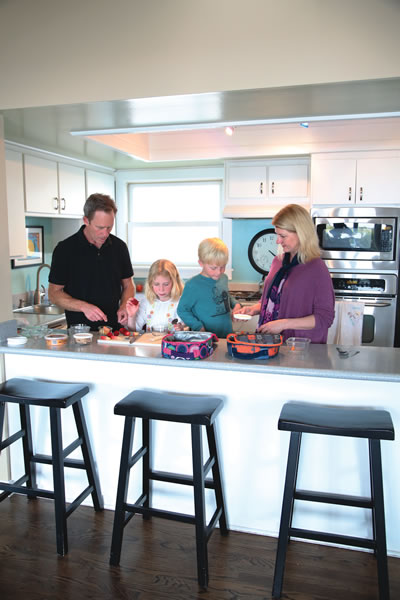 Laguna Beach, as a whole, does its best to foster sustainable lifestyles. Take, for example, the city’s water-saving ordinances, enacted to conserve Laguna’s sources of potable water that are 100 percent imported from the Colorado River and the San Francisco-San Joaquin Bay/Delta. Or, take into consideration the city’s exceptionally high waste diversion rate—70 percent of Laguna’s waste is diverted because of extensive waste management efforts, specifically a recycling program that more than 95 percent of residents participate in. And, most recently, plastics bags were banned on Jan. 1.
Laguna Beach, as a whole, does its best to foster sustainable lifestyles. Take, for example, the city’s water-saving ordinances, enacted to conserve Laguna’s sources of potable water that are 100 percent imported from the Colorado River and the San Francisco-San Joaquin Bay/Delta. Or, take into consideration the city’s exceptionally high waste diversion rate—70 percent of Laguna’s waste is diverted because of extensive waste management efforts, specifically a recycling program that more than 95 percent of residents participate in. And, most recently, plastics bags were banned on Jan. 1.
There are, however, select groups of people in Laguna who aren’t just stopping at this. They are committed to leaving the smallest carbon footprint possible to benefit future generations.
“Think of our children’s children,” says Laguna Beach resident and father Taylor Greene. “[Living sustainably] is the only way to maintain a bountiful earth in perpetuity. Future generations need to know we had the maturity as a species to make this transformation happen.”
All The Little Things
T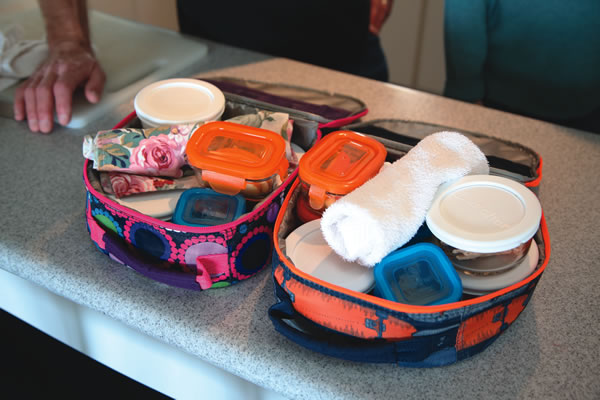 he Greene family comes off as an average south Laguna family—two kids, pet cats and two working parents under one roof. But it’s the things they do on a daily basis that Taylor says has them leaving less of a mark on the environment and more of an impact on their community. “It’s just shifting one habitat to another, more sustainable one,” he explains.
he Greene family comes off as an average south Laguna family—two kids, pet cats and two working parents under one roof. But it’s the things they do on a daily basis that Taylor says has them leaving less of a mark on the environment and more of an impact on their community. “It’s just shifting one habitat to another, more sustainable one,” he explains.
The sustainable shift starts as soon as they wake up and run a hot shower. Instead of turning the “H” knob first, they run upstairs and push a small button in the kitchen that triggers a hot water recirculation pump. The pump then redistributes the hot and cold water in the pipes, resulting in an instantaneous hot shower. “It’s using a little electricity,” Taylor explains. “But it’s one of those things where you decide water is almost more precious than energy in our area.”
From there, it’s the little things like packing “zero trash” school lunches with reusable containers for children Gavin and Hannali, utilizing low-flow toilets and energy-efficient laundry machines, turning off irrigation systems when the weather permits, composting, using reusable shopping bags for at least the past 20 years, and lighting the house with compact fluorescent lights (CFLs) and light-emitting diode (LED) bulbs.
But most importantly, Taylor says his family takes the extra step to leave the car keys behind for Laguna Beach Transit and Public Transportation. “It’s kind of what we’ve created; our lifestyle, our pace,” Taylor explains. And even Taylor’s children do their part in building a better future.
Gavin, 6, and Hannali, 9, both attend El Morro Elementary, and every morning they ride the bus because, as Taylor says, “The bus is going anyway, so it’s better they’re on that than drive another car trip and burn that gas.”
The family’s next endeavor is installing a water-saving greywater irrigation system that reuses household wastewater from baths, sinks and laundry for irrigation.
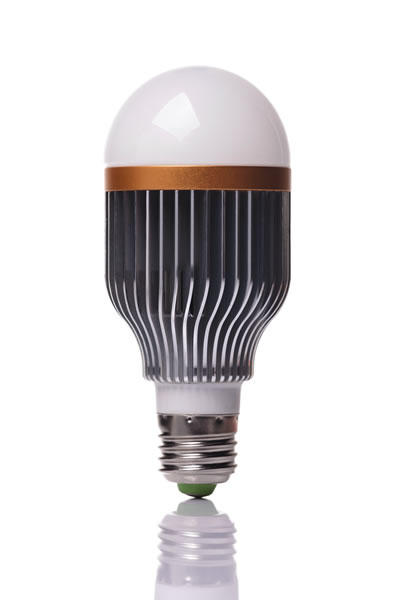
Less Is More
The Hlava family couldn’t agree more with Taylor when it comes to opting for biking and walking to get around town.
“We’re big urban hikers,” explains Tamara, who with the help of her husband Emrich and other community members recently worked toward implementing a walking path from Moulton Meadows Park to Top of the World. Their 5-year-old daughter, Adeline, doesn’t attend Top of the World Elementary yet, but the Hlavas still feel the need to help the community see how important it is to give the option of a safe walking trail to get to school.
“Particularly for children, if they can get some exercise in the morning, studies have proven that they are way more receptive to education and to sitting down and learning something,” Tamara explains. “Adeline is really our inspiration because [we think:] ‘What do we want this community to be like for her?’ ”
So recently, the Hlavas took an opportunity to reduce their impact even more by purchasing a “true small home” that is about 1,200 square feet. What makes the house special, though, is its location.
The house is southwest facing, which Tamara says adds the element of “passive solar,” meaning the Hlavas will rarely, if ever, have to heat or cool their home due to the unique angles the sun hits it throughout the year. This will also help with the vegetable gardens and fruit and nut trees they have planned for the yard.
“We have made choices to modify our lives to be able to do these things,” Emrich explains. “There’s some sacrifices. … We might not live in a house as big as we like, but I think the payoffs are greater.”
From Grass to Gardens
The Keces, who live on Bonn Drive, enlisted the help of local sustainability group Transition Laguna and used a $250 promotional stipend from the Laguna Beach County Water District to get rid of their lawn in October 2011, replacing it with four large planter boxes. These boxes serve to eliminate water previously wasted on lawn irrigation, and as a welcomed side effect, provided the Keces with a bonding experience—not to mention fresh produce.
“People are walking by in the neighborhood and I have my huge, abundant garden, so I’m handing people peppers, and we’re sitting and chatting,” Tammy says. “It’s bringing back that feeling and sense of community where you’re talking to your neighbors.”

To aid the gardening process and increase the soil nutrients needed for growth, the Keces are avid composters, with their green-and-brown layering zone stowed on the side of their house. Tammy’s husband, Matthew, says this helped turn the gardens into a learning experience for the whole family.
“It’s a great feeling when you see the kids going there; they get their hands in the soil and they’ve got their hands dirty,” he explains. “They can appreciate that you plant the seed and you put water paired with sun, and after ‘X’ amount of weeks or months, it produces something.”
Plus, Tammy says it saves money. “We’re buying less and less at the market,” she says. “We’ve gotten to the point where we look around and, if there’s any bush or plant that isn’t a food, we’re taking it out and replacing it.”
To cut back on water use even more, the Keces also use their rain gutters to catch rainwater and store it in a tank to use for watering. They’ve also installed a Japanese-style shower to cut down on water wasted while bathing—inspired from the time Tammy and Matthew spent living in Japan. The shower combines both a stand-up shower and tub, so the idea is to quickly wash your body before filling the tub to soak.
Tammy says she’s gotten so adamant about saving water around the house that she even occasionally gets flack from the kids while doing the dishes. “They’ll come over and say, ‘Oh you’re wasting water!’ ” Tammy says. “They’re on it, but that’s what I wanted for the family—first of all, to have fun together and to be able to grow food and cook together. That is the easiest thing families can do together, and you get so much out of it [including] the awareness now about how everything we do makes an impact.”
Green House
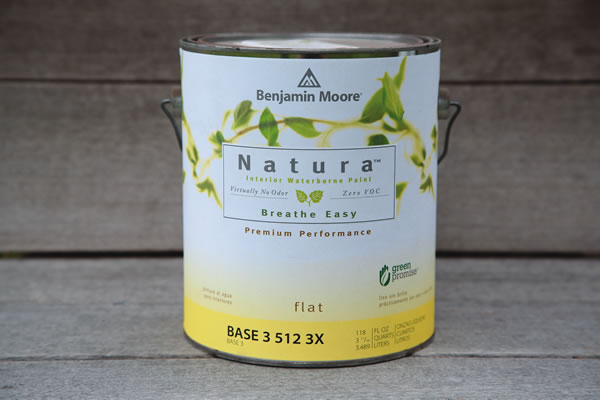 Making an impact was the first thing on Max and Maria Isles’ minds when the two, who both studied environmental sciences, began preparing to move into their one-story, two-bedroom house on Seaview Street. From the graveled driveway (which permits more water absorption into the ground as opposed to the sewer) to the zero-volatile organic compound paints on their walls, the Isles family, including son Brandon, 12, focuses on embracing the green lifestyle.
Making an impact was the first thing on Max and Maria Isles’ minds when the two, who both studied environmental sciences, began preparing to move into their one-story, two-bedroom house on Seaview Street. From the graveled driveway (which permits more water absorption into the ground as opposed to the sewer) to the zero-volatile organic compound paints on their walls, the Isles family, including son Brandon, 12, focuses on embracing the green lifestyle.
“We’ve kind of always been into [sustainability] and the idea that if you’re not sacrificing anything, you’re not having a hard life; it’s just that normally we’re so, so wasteful,” Max says. “To me that just doesn’t feel right.”
It started with the installation of denim insulation in the roof and cellulose (which is basically tightly packed, recycled newspaper) in the walls. This keeps the house cool in the summers (the Isles don’t have an air conditioner) and cuts down on heating costs in the winter. Then came the small touches such as CFL and LED lights and smart strips that control electronics, so when the main console powers off, it also cuts off power to connected devices. These efforts do more for the family than just cut back on their carbon footprint; Max says their conscientious electricity use has resulted in a mere $25-per-month electricity bill.
More changes came, including to their one bathroom, where they’ve installed a water recirculation pump. Max says the process of creating a sustainable house was done without any specific method. “From when we moved in, we were like, ‘Well, we’re going to try to keep stuff relatively natural in here’—energy-efficient appliances, low flow this … [and] as you learn new little tricks you add them into the mix.”
Tricks such as using a water filtration tap for drinking water or Max’s tried-and-true fix to turn a 1.6-gallon toilet into a 1.2-gallon: an ordinary red brick. Maria also recently switched from the fancy countertop compost bins to a regular metal bowl because it’s just easier to manage.
Outside, the Isles’ yard has been transformed into a green dream. They have three planter boxes in the backyard area with 19 fruit and nut trees as well as edible plants. Their vermiculture is tucked away in a corner of the yard and stored in up-cycled waste management bins that Max cut the bottoms from and drilled holes into to create compost-ready bins. All of this is maintained by water supplied from a combination of their greywater and rain catchment systems. Max stores up to 900 gallons of rainwater on his property for irrigation purposes, which usually lasts him throughout July—a few short months before California starts seeing more rain again.
“The reason I do it is because I worry about our future as a race,” Max says. “It’s not to save the planet—the planet would be a lot better off without us. We’re just trying to save our own hides; that’s what we’re trying to do.” LBM
Sharael Kolberg and family moved to Laguna Beach from San Jose in 2009. While living in Northern California, the Kolbergs—Sharael, her husband Jeff and daughter Caitlyn (who was 6 at the time)—made the decision to go off the grid and take a break from technology for a year. It was in this time that Sharael shared her passion for gardening with the family. This resulted in the Kolbergs discovering the power of vermiculture—composting with worms, one of the most efficient ways to compost. When the time came to make the move to Laguna, the moving company refused to take the worms. Their reasoning: They don’t move “pets.” “So we had this stinky smelly worm bin in the back of my car driving down here,” Sharael says.
The worms now have a permanent home at El Morro Elementary School where Sharael, a certified master gardener, works as a garden volunteer.
“I thought we can still compost our food scraps, but I can use that bin as a teaching tool for the kids,” Sharael explains. “So the worms are going strong, and now we use that compost to take care of the garden boxes at the school.”


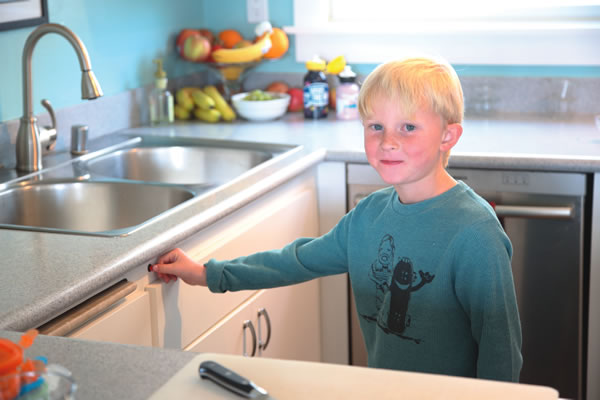

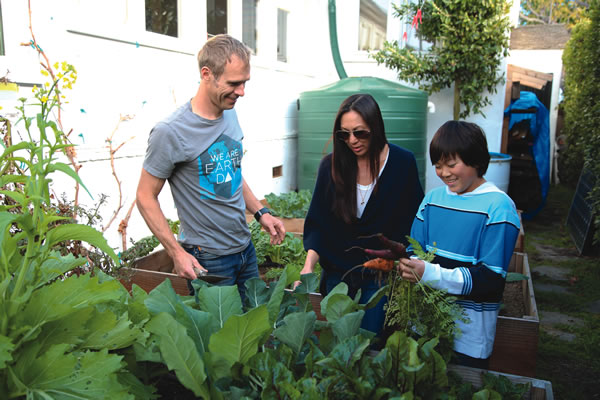
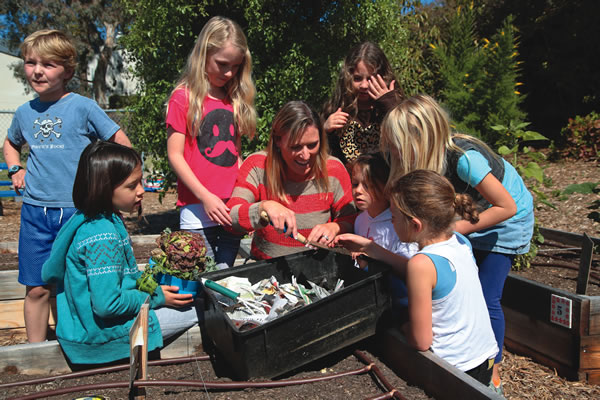


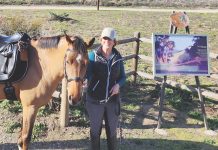
Great insights into leading a sustainable lifestyle, especially the power of vermiculture which is catching on worldwide.
Great article! Our planet is very much polluted. Therefore, every person should try to less a damage to an environment. To do this, it is necessary to sort trash, reuse any material or things (for example, from old boards or pallets, you can make designer furniture). Also you need to buy things that contain a minimum amount of harmful chemical elements. In addition, we must try to use natural methods of production of any raw materials. For example, eco-cotton. When growing usual cotton, many different chemicals are used, which contaminate the soil. For growing of eco-cotton, chemicals are not used. There are a lot of such examples. Therefore, it is important to understand that your actions can harm the environment. Thank you for the article!
Great idea for the garden!